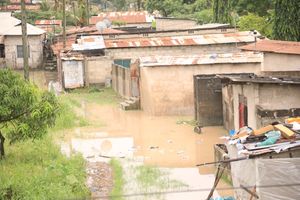Zambia’s economic tumble offers important lessons for East Africa

Mr Edgar Lungu takes oath of office as president of Zambia last year. PHOTO | FILE
What you need to know:
Zambia has always been seen as a darling of international investors and just three years ago, its euro bond was oversubscribed by a spectacular 15 times, attracting orders of nearly $12-billion, even though it was offering lower interest rates than some developed-world bonds.
The Economic situation in Zambia continues to deteriorate and is threatening to send the copper-rich country that was recently anointed by the World Bank as “middle income nation”, to total economic collapse.
Zambia has always been seen as a darling of international investors and just three years ago, its euro bond was oversubscribed by a spectacular 15 times, attracting orders of nearly $12-billion, even though it was offering lower interest rates than some developed-world bonds.
Over the years, the country has been steadily attracting a chain of multinational companies, including Barrick Gold Corp, Glencore PLC and First Quantum Mineral Ltd, all of which have been among Zambia’s biggest private employers. For decades, Zambia has been reaping heavily from its sole mineral export – Copper which accounted for nearly 70 per cent of the country’s export earnings and was the second biggest copper producer in Africa only second to DRC which overtook Zambia last year as the leading Copper producer in Africa.
But today, Zambia is a lesson on the perils of over-dependence on a single commodity and a handful of multinational mining companies. The copper boom is over. Glencore, one of the largest mining companies, has fallen into a cost-cutting crisis; Zambian mines are being shuttered and the currency has been performing badly. Its euro bond interest rates have soared to nearly 12 per cent in recent times.
Declining copper prices and a severe electricity shortage are the biggest reasons for Zambia’s tumble. Its currency, the kwacha, has lost about 50 per cent of its value against the US dollar over the past year, fuelling higher prices on imported goods. The price of Zambia’s main food staple, maize meal, jumped by 20 per cent last month because of higher input costs. Copper prices have weakened by more than 20 per cent over the past year, mostly because of softer demand from China, Zambia’s biggest trading partner. Zambia’s economic growth rate, which had averaged 7 per cent annually for the past five years, has fallen to an estimated 3.4 per cent this year, and analysts have speculated that the country might have to turn to the International Monetary Fund for assistance.
Although the country has announced a host of austerity measures which, among others, include: review of agricultural subsidies and electricity tariffs, a ban on unnecessary travels, slow down and postponement of all infrastructure projects and halting its plan to start a national carrier – only time will tell if these will bring back the country on track.
The situation in Zambia should be an eye opener for a number of African countries that depend on few export commodities to earn foreign exchange and depend on multi-national companies for revenue and employment. Changes in demand conditions for those few exports could easily throw the country off-balance. This is exactly what seems to be playing out in the Zambian situation. Many African counties have continuously negated the agricultural sector through dismal budget allocations and little support towards value addition. If Zambia had a vibrant agricultural sector as a fallback position, perhaps the economic impact from the crush of copper prices could have been cushioned.
Uganda, like the rest of African countries, needs to support local investors. (NMG)
Mr Were manages a large scale financial inclusion programme for Sub-Saharan Africa. [email protected]




